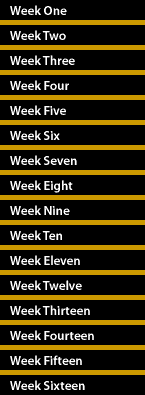 |
 |
 |
 |

Water Activities
Catch a Globe: How
much of Earth is covered with water?
In this investigation students will determine the relative areas of
the Earth covered by water and land by using an inflatable 12"diameter
Earth globe to play catch. As each student catches the globe using both
hands, we record if the thumbs are (or mostly are) on water or on land.
By graphing the results, we begin to discover that the thumbs usually
land on water. This activity supports the development of understanding
of surface area of the earth covered by water and develops ideas related
to probability and percentages. An extension of this investigation is
to have students record if their thumbs land on ice (North and South Pole
areas).
Evaporating Water:
Now you see it, Now you don't!
Evaporation is a very complex concept for grades K-4; however, we can
observe water standing and record changes over time. Have students create
ideas as to where the water went and then create ways to test the ideas.
Draw a line on a wide-mouth jar half-filled with water to record the amount
of water in the jar. Observe the amount of water and record the changes
over several days. Students may also observe the evaporation of puddles
in the playground.
Are there places where
water evaporates more quickly? Select places both inside and outside to
get wet by spraying or wiping with a wet rag. Record the time that it
takes for all of the water to disappear. What if we pour a glass of water
into a cake pan and pour another glass into the same kind of a pan with
about 1" of dry dirt in the bottom? What container gets dry first?
Freezing water:
Ice is Nice!
Can you
sink an ice cube without holding it down or pushing it with other materials?
Describe floating ice. Observe an ice block floating in an aquarium so
that you can see the part under the water. Is it almost sinking? Where
do you think ice forms on a river?
Students should explore
freezing and thawing water. Put a plastic bowl with 4" of water in
the freezer and let it begin to freeze. Where does it freeze first (top
or bottom)? Put water in various containers such as a plastic glove and
molds of different shapes (a way to discover that water takes the shape
of the container). Freeze water in a plastic container filled completely
with water and observe the results of the expanding water (no glass containers).
Compare to water freezing in the cracks of rocks as a weathering process.
How many ways can
you melt an ice cube? Try a quick thaw plate and watch the cube melt.
Does the plate lose its ability to melt quickly? Will an ice cube melt
faster in a warm blanket or out in the open at room temperature?
What about outside
in the sun? What is the longest that an ice cube can survive at room temperature?
How can we get it to melt faster at room temperature?
Create an ocean using
salt water and test its freezing point.
The Proportion of
Water on Earth That Is Fresh
Teacher Notes:
You can demonstrate for your students or provide each student group with
two 1000 ml beakers, about 10 grams of salt, and a small paper cup.
Directions:
- Fill one of the
1000 ml beakers as near to the top as possible. This filled beaker represents
all of the water in the world.
- Pour 97 percent
of the water from the filled beaker into the second beaker along with
about 7 or 8 grams of salt. The second beaker represents 97 percent
of the world's water that is salty. [Note: The vast majority of the
planet's water is salty and unsuitable for most domestic, agricultural
and industrial uses.]
- Pour two-thirds
of the water remaining in the first beaker into a small paper cup and
place it in a freezer. [Note: This cup represents two-thirds of all
of the fresh water on Earth frozen away in glaciers and ice caps. The
several drops (1 percent) that remain at the bottom of the first beaker
represent the world's fresh water supply that keeps living things alive.]
Materials
- 12" diameter
inflatable Earth globe
- wide-mouth jar
- dirt (wet and dry)
- ice cubes
- 4" plastic
bowl
- various shaped
container (plastic glove, jello molds, etc.)
- quick thaw plate
- blanket
- two 1000 ml beakers
- salt
- paper cup
Other Questions
for Students
- Is there water
in the air? Prove it! (A cold can of soda should help-as
it gets wet, ask where he water is coming from...where does
the water go again as the can warms up and dries off? Another
thought is to watch a bowl full of water evaporate over a
few days.)
- What happens to
water when it freezes? (It gets cold, it expands, it
gets hard...the expansion part in important, and a very special
property of water.
Ice floats, allowing the water below to remain
warmer. Important for lakes and ponds in winter to keep
the fish alive. The freeze/thaw cycle is also important for loosening
soil, bringing rocks to the surface etc.)
- How does water
move on land? (Rivers, streams, underground in aquifers-always
downhill.)
- How does water
move in the air? (It moves with the air, forming
clouds, and raining or snowing when conditions are right.)
- How does water
move in water? (Ocean currents, waves, tides-but
also helped by the wind--making waves and Earth and the
moon--making tides.)
- What happens to
life without water? (Plant/animals will die-but some
adapt for dormancy when its dry. Seeds can be completely dry,
but will germinate when exposed to water-they can be dormant
for hundreds of years ...)
- If you have a bucket
of dry soil, and pour a cup of water on it, will
you be able to collect that cup of water on the bottom of the
bucket after it takes the time to drip through? (here is the
idea of water absorption
by soils-it sticks to the particles of soil and
collects in the interstitial spaces, held there by surface tension.
So unless the soil is completely saturated, the cup of water
will never make it through the pail of dry dirt or sand. This
is where the plants get their water from, this moisture held
by the soil. Some
soil is better at holding the water than other soil
(A lot depends on particle size, organic content, etc.)
- What does water
do when it runs down a hill? (It carries along sediment-particles
of sand and mud. Some of these are re-deposited
as the water runs, others are carried along all the way
to the lake or ocean. The neatest thing to do is watch a garden
hose run on a pile of dirt, or springtime creeks through the
field, or pails of water running back to the ocean on the beach.
Erosion when the water is running swiftly, deposition when
is slows down. Nearly the entire planet has been eroded away
to the sea at one time or another since its formation-some places
it has been eroded and recycled may times-only plate tectonics
and the hot interior of Earth has kept the planet from becoming
one huge swamp at sea level.)
- Why are the pebbles
on the beach rounded? (Water and sand eroding
the sharp edges and corners of the rock.)
- What happens when
water runs through rocks? (Grand Canyon, etc,
or if the rocks are limestone, caves can be formed...)
Teacher References
- GEMS Liquid Explorations
- GEMS Involving
Dissolving
- Topographic maps
of polar regions
- Earth at Hand,
NSTA, 1993.
- AIMS. "Primarily
Earth." AIMS Education Foundation. Fresno, CA.
- AIMS. "Water
Precious Water." AIMS Education Foundation. Fresno, CA.
Children's References
- Aardema, Verna.
"Bringing the Rain To Kapiti Plain." Dial. 1981.
- Barrett, Judith.
Cloudy With a Chance of Meatballs. Atheneum Books, NY. 1978.
- Bramwell, Martyn.
Rivers & Lakes. Franklin Watts. NY. 1994.
- Cole, Joanna. The
Magic School Bus on the Ocean Floor. Scholastic, Inc., NY. 1992.
- Craft, Ruth. The
Day of the Rainbow. Viking Press, NY. 1989.
- dePaola, Tomie.
The Cloud Book. Holiday Books, NY. 1975 Ehlert, Lois. Snowballs. Harcourt
Brace & Co., 1995.
- George, Michael.
Glaciers. Creative Education, Mankato, MN. 1991.
- Lambert, David.
Seas & Oceans. Steck-Vaughn, Austin, TX. 1994.
- Markle, Sandra.
A Rainy Day. Orchard Books, 1993.
- Pearce, Q.L. Tidal
Waves & Other Ocean Wonders. Julian Messner. Englewood Cliffs, N.J.
1989.
- Peters, Lisa Westberg.
Water's Way. Arcade Publishing, NY. 1991.
- Schmit, Eleanore.
The Water's Journey. North-South Books, NY. 1990.
- Soutter-Perrot,
Andrienne. Water. Creative Education 1993.
- Walker, Sally M.
Water Up, Water Down. Carolrhoda, 1992.
[
Back to Outline ]
[
Home ] [ Intro
] [ Guide ] [
Classroom ]
|
 |
 |




|
 |